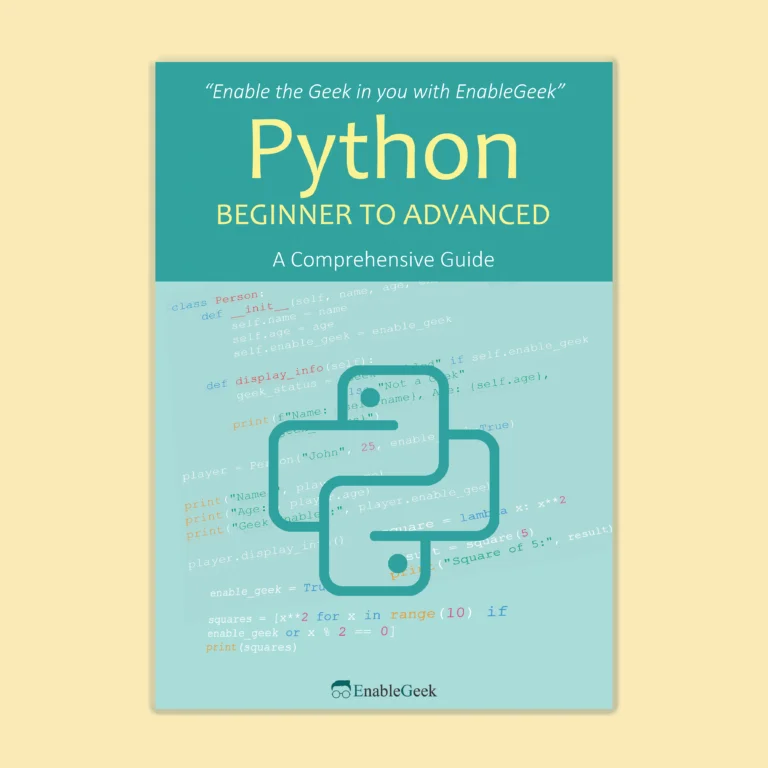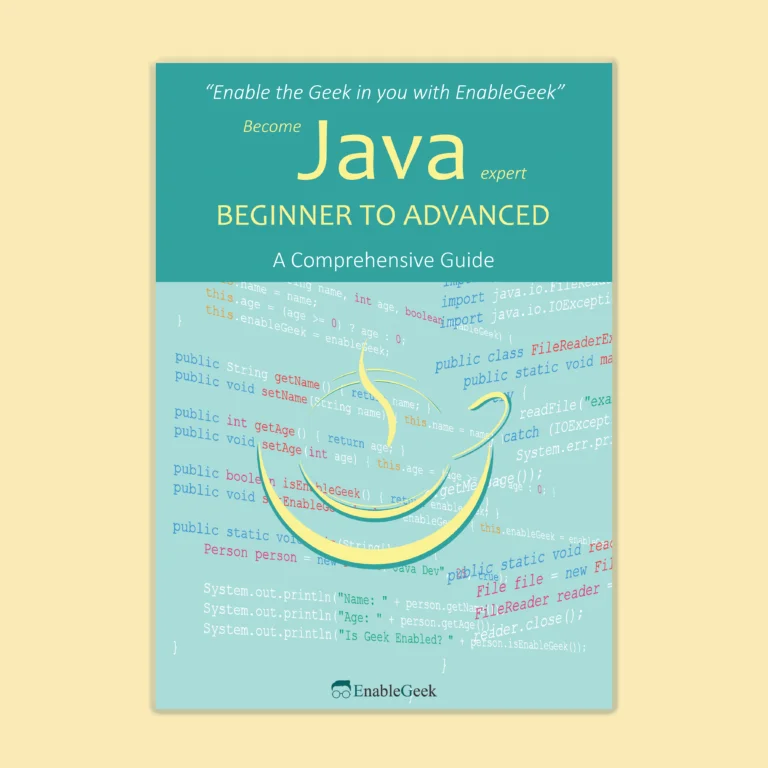Introduction to Iterators
Iterators are a fundamental concept in Python that allow you to traverse through a collection of items, one at a time, without the need to access the entire collection at once. Essentially, an iterator is an object that implements two methods: __iter__() and __next__(). These methods enable you to loop through elements in a sequence, such as a list, tuple, or custom data structure, by providing a mechanism to fetch the next item in the sequence as needed.
Why are iterators important in Python?
Iterators play a crucial role in Python for several reasons:
- Efficient Memory Usage: Iterators facilitate lazy evaluation, which means they generate and return elements on-the-fly as you iterate over them. This minimizes memory usage, making them ideal for working with large datasets or infinite sequences.
- Versatility: Python iterators can be used with a wide range of data structures, including built-in containers (lists, dictionaries, sets) and custom objects. This versatility allows you to iterate over various types of data seamlessly.
- Cleaner, Readable Code: Using iterators often results in more concise and readable code compared to traditional loop constructs. This can lead to improved code maintainability and reduced chances of errors.
- Compatibility: Many Python libraries and functions are designed to work with iterators, making them an essential part of the Python ecosystem. Understanding iterators is key to effectively using these libraries.
- Functional Programming: Iterators align with Python’s support for functional programming paradigms, enabling operations like mapping, filtering, and reducing elements in a collection with ease.
- Support for Custom Data Structures: You can implement custom iterators for your own data structures, allowing you to define how traversal should occur, making your code more expressive and tailored to your specific needs.
Built-in Iterators
Lists:
Lists are one of the most commonly used data structures in Python. They are ordered collections of elements, and you can iterate over them using a for loop or by directly using an iterator.
Using a for loop:
my_list = [1, 2, 3, 4, 5]
for item in my_list:
print(item)
Using an iterator:
my_list = [1, 2, 3, 4, 5]
iterator = iter(my_list)
while True:
try:
item = next(iterator)
print(item)
except StopIteration:
break
Dictionaries:
Dictionaries are collections of key-value pairs. To iterate over a dictionary, you can iterate over its keys, values, or key-value pairs.
my_dict = {'name': 'John', 'age': 30, 'city': 'New York'}
for key in my_dict:
print(key)
Iterating over values:
for value in my_dict.values():
print(value)Iterating over key-value pairs:
for key, value in my_dict.items():
print(key, value)
Tuples:
Tuples are ordered and immutable collections in Python. You can iterate over tuples in the same way as lists, using a for loop or an iterator.
Using a for loop:
my_tuple = (1, 2, 3, 4, 5)
for item in my_tuple:
print(item)
Using an iterator:
my_tuple = (1, 2, 3, 4, 5)
iterator = iter(my_tuple)
while True:
try:
item = next(iterator)
print(item)
except StopIteration:
break
In all these examples, you can access each element of the data structure one at a time, making it easy to perform operations or computations on the elements as you iterate through them. Python’s built-in iterators make it convenient to work with these common data structures, and they are an essential part of Python programming.
Creating Custom Iterators
Creating custom iterators in Python allows you to define how traversal should occur for your own data structures or objects. To create a custom iterator, you need to implement two special methods: __iter__() and __next__() in a class. Here’s how to do it:
__iter__()Method:- The
__iter__()method should return the iterator object itself (typicallyself). - This method is called when you start iterating over an object.
- The
__next__()Method:- The
__next__()method is responsible for returning the next value in the sequence. - If there are no more items to return, it should raise the
StopIterationexception to signal the end of iteration.
- The
Here’s an example of creating a custom iterator for a simple range-like sequence:
class MyRange:
def __init__(self, start, end):
self.start = start
self.end = end
def __iter__(self):
# The iterator should start at the 'start' value
self.current = self.start
return self
def __next__(self):
if self.current >= self.end:
# Signal the end of iteration
raise StopIteration
else:
# Return the current value and increment it for the next iteration
result = self.current
self.current += 1
return result
# Usage:
my_range = MyRange(1, 5)
# Using a for loop
for num in my_range:
print(num)
# Using an iterator explicitly
my_iterator = iter(my_range)
print(next(my_iterator)) # 1
print(next(my_iterator)) # 2
print(next(my_iterator)) # 3
print(next(my_iterator)) # 4
print(next(my_iterator)) # Raises StopIteration
In this example, we’ve created a custom iterator MyRange that generates a sequence of numbers between start and end. The __iter__() method initializes the iterator, and the __next__() method defines how to retrieve the next value in the sequence.
By implementing these methods, you can define custom iterators for your own data structures, allowing you to control how objects are iterated over in a way that makes sense for your specific use case.
Iterable vs. Iterator
Distinction between an Iterable and an Iterator:
In Python, an iterable and an iterator are related concepts, but they serve different purposes:
- Iterable: An iterable is an object that can be looped over or iterated upon. It is any Python object capable of returning its elements one at a time. Common iterable objects include lists, tuples, dictionaries, strings, sets, and more. Iterable objects support the
iter()function, which returns an iterator when called on the iterable. - Iterator: An iterator is an object representing a stream of data, with the ability to return one element at a time when requested. Iterators are used to iterate over iterable objects. An iterator must implement the
__iter__()method to return itself and the__next__()method to retrieve the next element. It raises aStopIterationexception when there are no more items to be returned.
In summary, an iterable is any object that you can loop over, while an iterator is the object responsible for actually traversing and providing the elements of that iterable.
Making an Object Iterable:
To make an object iterable in Python, you need to define the __iter__() method in the object’s class. This method should return an iterator object (which could be the object itself or a separate iterator object).
Here’s an example of how to make a custom object iterable:
class MyIterable:
def __init__(self, data):
self.data = data
def __iter__(self):
# Return an iterator object (in this case, 'self' serves as the iterator)
self.index = 0
return self
def __next__(self):
if self.index < len(self.data):
result = self.data[self.index]
self.index += 1
return result
else:
# Signal the end of iteration
raise StopIteration
# Usage:
my_iterable = MyIterable([1, 2, 3, 4, 5])
for item in my_iterable:
print(item)
In this example, we’ve created a custom iterable object MyIterable with an __iter__() method that returns self as the iterator. The __next__() method defines how to retrieve the next item from the data. When the iterable is exhausted, it raises a StopIteration exception to signal the end of iteration.
By implementing the __iter__() method, you can make your custom objects iterable, allowing them to be used in for loops and other constructs that work with iterable objects in Python.



